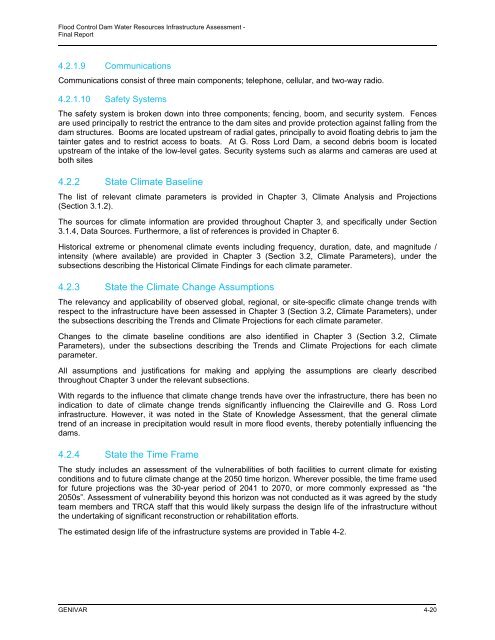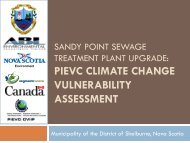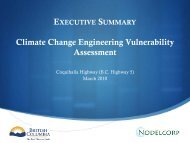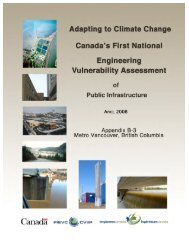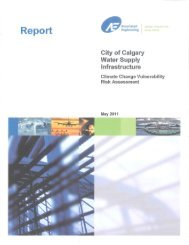Final Report - Vulnerability Committee
Final Report - Vulnerability Committee
Final Report - Vulnerability Committee
You also want an ePaper? Increase the reach of your titles
YUMPU automatically turns print PDFs into web optimized ePapers that Google loves.
Flood Control Dam Water Resources Infrastructure Assessment -<strong>Final</strong> <strong>Report</strong>4.2.1.9 CommunicationsCommunications consist of three main components; telephone, cellular, and two-way radio.4.2.1.10 Safety SystemsThe safety system is broken down into three components; fencing, boom, and security system. Fencesare used principally to restrict the entrance to the dam sites and provide protection against falling from thedam structures. Booms are located upstream of radial gates, principally to avoid floating debris to jam thetainter gates and to restrict access to boats. At G. Ross Lord Dam, a second debris boom is locatedupstream of the intake of the low-level gates. Security systems such as alarms and cameras are used atboth sites4.2.2 State Climate BaselineThe list of relevant climate parameters is provided in Chapter 3, Climate Analysis and Projections(Section 3.1.2).The sources for climate information are provided throughout Chapter 3, and specifically under Section3.1.4, Data Sources. Furthermore, a list of references is provided in Chapter 6.Historical extreme or phenomenal climate events including frequency, duration, date, and magnitude /intensity (where available) are provided in Chapter 3 (Section 3.2, Climate Parameters), under thesubsections describing the Historical Climate Findings for each climate parameter.4.2.3 State the Climate Change AssumptionsThe relevancy and applicability of observed global, regional, or site-specific climate change trends withrespect to the infrastructure have been assessed in Chapter 3 (Section 3.2, Climate Parameters), underthe subsections describing the Trends and Climate Projections for each climate parameter.Changes to the climate baseline conditions are also identified in Chapter 3 (Section 3.2, ClimateParameters), under the subsections describing the Trends and Climate Projections for each climateparameter.All assumptions and justifications for making and applying the assumptions are clearly describedthroughout Chapter 3 under the relevant subsections.With regards to the influence that climate change trends have over the infrastructure, there has been noindication to date of climate change trends significantly influencing the Claireville and G. Ross Lordinfrastructure. However, it was noted in the State of Knowledge Assessment, that the general climatetrend of an increase in precipitation would result in more flood events, thereby potentially influencing thedams.4.2.4 State the Time FrameThe study includes an assessment of the vulnerabilities of both facilities to current climate for existingconditions and to future climate change at the 2050 time horizon. Wherever possible, the time frame usedfor future projections was the 30-year period of 2041 to 2070, or more commonly expressed as “the2050s”. Assessment of vulnerability beyond this horizon was not conducted as it was agreed by the studyteam members and TRCA staff that this would likely surpass the design life of the infrastructure withoutthe undertaking of significant reconstruction or rehabilitation efforts.The estimated design life of the infrastructure systems are provided in Table 4-2.GENIVAR 4-20


